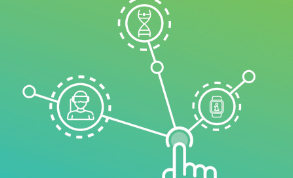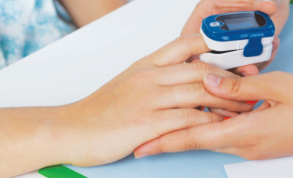Feature / Switching it up
During the pandemic, we have witnessed the power of genomics as a tool to support healthcare professionals, with the discipline used to identify Covid-19 variants and track their spread.
Knowledge of the genome was crucial in the development of messenger RNA (mRNA) vaccines, such as those developed by Pfizer BioNTech and Moderna. The potential of genomics is huge – it is already used to tailor chemotherapy for cancer patients, increasing its effectiveness and reducing side-effects – and is an example of technological developments that will revolutionise both healthcare treatment and prevention.
Genomics was one of three areas highlighted in 2019’s influential Topol review, Preparing the healthcare workforce to deliver the digital future, which recommended actions to ensure the NHS has the skills to be a world leader in using digital technologies to benefit patients.
The review also singled out two further areas – digital medicine, and artificial intelligence (AI) and robotics. While digital medicine could include telemedicine, smartphone apps, and wearable sensors, AI and robotics could be used in surgery, automatic image interpretation and population predictive analytics.
The review predicts that, underpinned by data, within 20 years these three high-profile technologies will converge and complement each other, allowing NHS staff to deliver more personalised care and disease prevention.
The NHS must get ready now to ensure it makes the most of digital’s myriad opportunities by training its clinical staff and preparing non-clinical workers, including finance staff.
To this end, the HFMA has launched a 12-month programme, supported by Health Education England (HEE), to raise awareness among finance staff of how digital technologies can transform services and drive value and efficiency.
But why target finance staff? Patrick Mitchell, HEE director of innovation, digital and transformation – who was also senior responsible officer for the Topol review – says: ‘It’s to recognise the central place finance takes in the NHS – finance staff hold the public purse and help plan resources and how they are deployed. Finance has to be central to this as the digital agenda will be driving productivity, the use of data, the use of AI, and the use of digital healthcare. Finance has got to be part of this to understand the agenda, and what it means, so it is better able to influence how it is deployed.’
Mr Mitchell adds that finance staff will be involved in the early stages of business cases. ‘They could stimulate business case production alongside clinicians; asking the challenging questions as to why they are not using data to support clinical decision-making; or talking to radiologists about what kit they need to buy to use AI-driven diagnostics to support their workload. If finance is not a part of this, there will be an impasse – clinicians will want to do it and we really want finance staff to be there with them.’
He insists the programme is not just for senior finance practitioners. ‘It’s also for finance business managers working on the shop floor with clinicians and service managers. I hope they get excited about it, and there is some co-production between finance people and those they work with in hospital and community settings, and, I would like to think, primary care finance teams.’
King’s Fund fellow for digital technologies Pritesh Mistry agrees that finance staff can be powerful advocates for digital transformation. ‘There are different phases of transformation, and if you can have the support of finance – with robust policies and the right processes, and a shared understanding that some ideas will turn out to be a dead end – that’s really powerful. If you can have data available to strengthen the outline business case for transformation, for example, and then build that into forecasting, this is hugely valuable in making sure that the management support is there for digital transformation.
‘A lot of people don’t realise that IT needs considerable maintenance and this requires investment.’
Mr Mitchell says digital transformation has many facets for the NHS and should be primarily about designing services by putting the patient at the centre. To support this, HEE must equip learners and those who facilitate learning with the digital skills so they can be part of the redesign journey.
He continues: ‘The retail sector has used a methodology that tries to put the product in people’s homes, or as close to the home or service user as possible. That’s different to the historical way the health service has designed itself, which has been around the institution and the healthcare professional and their requirements, and not necessarily directly the patient.
‘From an HEE point of view, we are looking to be a Digital First organisation ourselves and use digital transformation to better manage the needs of those who we serve – the trainees and learners in the health service; and the educators who work with us to teach those trainees and learners. We must make sure the digital infrastructure is designed around their needs and the way education is delivered.’
Digital transformation is not just about the IT, which in itself provides only the infrastructure. So it needs to involve more than technologists – those responsible for the IT – and also include those who manage knowledge, those working with data, and informaticians.
While ‘big box’ solutions that often rely on data, such as the electronic patient record, can be individual elements of digital transformation, they are not the whole story, Mr Mitchell insists. ‘Data and how it is used, especially with AI technology, can be crucial for helping support future higher productivity. We will be using data differently – to drive a different kind of clinical decision-making, in trend and predictive analysis, for example, where we are already seeing that in the use of AI in genomics and cancer.
‘But that is only one component of how the digital agenda is going to drive the future of health service delivery. We have to look in the wider sense in terms of digital healthcare, AI and robotics, and genomics, which were the three areas identified in the Topol review.’
Mr Mitchell says genomics will drive a new wave of development in diagnostics and treatment. Although strictly speaking not a digital technology, it relies on data, so it would have been remiss not to include it in the Topol review, he adds.
Bigger picture
Digital transformation does not always mean cutting-edge tech with the ‘wow’ factor. While advanced technologies will be important, they will be complemented by well-known gadgets and tools that are being used in new ways.
The pulse oximeter, for example, which can be bought for a few pounds, is being used to monitor Covid patients at home (see box). And drones have been used in remote parts of Scotland to deliver up to 3kg of medical supplies, lateral flow tests and personal protective equipment. The journey of up to 40 miles takes 15 minutes by drone, compared with more than a day by road and ferry.
The King’s Fund’s Dr Mistry says digital transformation is moving forward. ‘There’s something happening in terms of digital tools being used in new ways. That’s not unique to healthcare – in a lot of sectors there’s a lot of retooling and repurposing of digital technologies.’
In part, this is being driven by a generational shift, due to the advancement in technology with the advent of smartphones and cloud technology. That changes how organisations work – it leads to things like remote consultation and a much bigger pool of clinicians, for example – now you can go to people nationally to locum for you remotely.
‘With 80% of people having smartphones, the starting point changes – what does that mean for healthcare; how do you communicate with patients? Not only does the patient have a communication device in their hand, but it can also be a diagnostic tool. It will be interesting how this platform continues to develop.’
Dr Mistry adds that the benefits of AI and robotics will be harnessed, and the analysis of data – which is closely allied to AI – could transform healthcare. ‘The huge benefit of digital is that you can measure so much more. But it is dependent on what lens you put on it. There’s also a question of how much data is useful.’ This is particularly the case with finance.
NHSX head of innovation Yinka Makinde, who recently led an HFMA webinar as part of the Delivering value with digital technologies programme, says that though investment in new technology has increased over the past decade, 2020 was the defining year for the role of tech in delivering healthcare. Technology became central to the delivery of services as the NHS responded to the Covid pandemic.
‘I have theories why it accelerated. There are three areas. The first was that there was a lack of capacity to deliver routine care. It stimulated us to think differently about how we deliver care, and jolted us into action, to adopt, for example, virtual consultations and remote monitoring technologies, almost instantly,’ she says.
‘Second, there was a significant injection of funds from the centre and also locally through a reprioritisation of spending. Third, for the first time, digital was seen as a need to have, not a nice to have. Its value was acknowledged, and it was realised.’
Ms Makinde says that in 30 years’ time, personalised disease detection and treatment will focus on early detection, health monitoring and targeted treatment. She highlights three technological developments that will have an impact on these areas:
- Nanorobots – Ten times thinner than the width of DNA, they could be used to detect disease early and to deliver therapeutic drugs precisely where they are needed. Nanobots can already detect cystic fibrosis and sickle cell anaemia early.
- Continuous health monitoring – Used, for example, through smart homes and wearables, these provide alerts if a person’s wellbeing changes, giving early warning and, potentially, better outcomes as a result.
- Gene editing – This will move beyond the current focus on cancer and dementia to new ways of targeting treatment of other diseases.
Good data will be key to ensuring the success of these developments, so it is crucial the health service gets the basics in place, she adds.
The NHS had been gearing up for digital transformation before Covid, but the pandemic, and the need for the service to recover from its impact, means technology, new and old, is being used to design more efficient and effective pathways around the patient.
Finance staff must be aware of the opportunities so they can support best-value, high-quality services.
Digital programme
Delivering value with digital technologies is a 12-month HFMA programme, supported by Health Education England. It aims to raise awareness of the potential of digital technologies to transform the delivery of healthcare, and enable finance to take an active role in supporting the use of digital technology to transform services and drive value and efficiency.
Adoption of the technologies could lead to higher quality, more personalised care, as well as better outcomes for patients and greater efficiency. They could also help patients become more involved in their care and the maintenance of their wellbeing.
The programme will include briefings, roundtables and blogs, HFMA Bitesize training modules and more.
The new HFMA Delivering Value with Digital Technologies Award – which will be presented at the HFMA conference in December – will recognise innovative use of technology.
• For details go to the HFMA website
Preventing admissions
Daniel Hodgkiss, assistant programme manager (patient safety) at West Midlands Academic Health Science Network, hopes the pulse oximeter – the clip-on-your-finger blood oxygen monitor (pictured) – will one day be as common in the home medicine cabinet as a thermometer.
This relatively simple and inexpensive piece of technology is the foundation for the region’s pulse oximetry@home (step-up facility for Covid positive patients) and Covid virtual wards (step-down care for patients discharged from hospital).
‘In the early days of Covid, we realised patients were rapidly deteriorating and dying because Covid-19 causes silent hypoxia, where their oxygen sats were reducing quickly, which wasn’t being detected,’ says Mr Hodgkiss, who has responsibility for the managing deterioration safety improvement programme across the region.
This risk of silent hypoxia can lead to hospital admission. But the step-up and step-down facilities aim to support people in their own home, identifying patients at greatest risk of poor outcomes early by monitoring oxygen levels, and only admitting patients most in need of hospital treatment.
Patients are monitored up to three times a day for up to 14 days, including days five to seven and nine to 11 when patients’ condition can deteriorate. Initially, practitioners called the patients for their readings, but over time an app was developed. Calls are still made to those unable to use the app. If a patient’s oxygen saturation drops to 93% or 94%, their GP is notified and may do further tests, such as the sit-to-stand test to determine oxygen saturation. At 92% or below, the practitioner will arrange a hospital admission. This ensures that the patients with the greatest need are being treated in hospital.
Home pulse oximetry monitoring was nationally mandated for all clinical commissioning groups in October 2020, and nationally the NHS purchased 400,000 pulse oximeters. West Midlands accelerated the work, in partnership with the wider system, setting up pulse oximetry@home in all CCGs by December. Virtual Covid wards were established by January. While the home pulse oximetry project is run by primary care, virtual wards are led by secondary care, sometimes with primary care support.
While funding for virtual wards is drawn from existing budgets or Covid response allocations, pulse oximetry@home is financed by the GP expansion fund set up to increase capacity during Covid. As well as home pulse oximetry, the fund (worth £270m since November 2020) supports six other priorities.
The amount spent on oximetry may become clearer once a national evaluation report is published this month. But Mr Hodgkiss says the local impact has been positive. ‘We had 4,000 patients in the virtual wards and oximetry@home programmes, and if only 3%-5% were admitted or readmitted – that saves well over 3,000 patients going into hospital.
‘The Covid virtual wards have reduced length of stay, increasing acute capacity. Patients are feeling more confident – they can stay at home; they didn’t want to go to hospital as the perception was that if you did you would die of Covid. Patient satisfaction overall is tremendously high.’
The reductions in bed days potentially suggest significant savings. ‘But savings in the acute setting can lead to costs somewhere else in the system,’ he adds.
NHS England is working on expanding pulse oximetry, through the NHS@home programme, to prevent deterioration in patients with other conditions, and establishing non-Covid virtual wards, focusing initially on respiratory conditions to combat the rise in infections such as RSV (respiratory syncytial virus, which can be serious for infants and older adults).
Related content
This event will bring together professionals from the finance and technology sectors to explore the power of AI within NHS finance.
The HFMA South Central Branch would like to invite you to attend the 2024 annual conference!